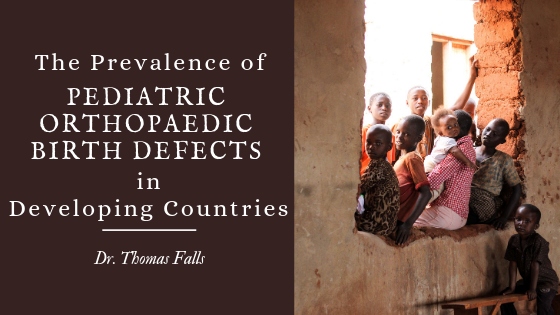Any soon-to-be parent hopes for a healthy, happy baby. It’s estimated that birth defects affect three percent of all babies born in the United States. In our country alone, birth defects account for twenty percent of all infant deaths, but that number is much higher in developing countries without access to advanced medical technology.
In approximately sixty percent of cases, the cause of a birth defect is unknown. In some cases, the cause is suspected to be an abnormal gene. In other cases, being exposed to certain infections or toxins during pregnancy can increase the risk of fetal birth defects.
The severity of an orthopaedic birth defect can vary. Clubfoot is the most common defect, as roughly one in every one-thousand babies is born with the condition. It’s also possible for children to be born with disorders like:
- Developmental dysplasia of the hip
- Arms or legs that don’t develop normally
- Osteogenesis imperfecta (also known as brittle-bone disease)
- Metatarsus adductus (a curved foot)
- Fused fingers
- Spina bifida
As an orthopedic surgeon, one of my specialties is correcting bone deformities in people of all ages. Some orthopaedic birth defects heal on their own, but others require surgery or an alternative treatment. Without treatment, children born with orthopaedic birth defects risk bone destruction, muscle and joint deformity, mobility problems, and arthritis later in life.
Orthopaedic birth defects in U.S.-born children are typically diagnosed early because children see medical professionals regularly throughout their first few years of life. Certain conditions may even be detected before birth, giving parents the time to prepare. This isn’t always true in developing countries around the world.
Poorer countries typically do not have the resources to effectively treat bone defects. When access to medical attention is limited, health care providers must treat emergencies first. Bone defects that severely impair a person’s quality of life don’t compare to immediately life-threatening injuries, so these types of orthopaedic surgery are seen as “elective” instead of necessary.
In truth, a bone deformity is often a serious condition that should be treated as soon as possible. For example, a child who is born with an orthopaedic birth defect may have difficulty walking, making it nearly impossible for them to access education and eventually earn a living. Their disability could cause a strained relationship with their peers, leading to isolation.
The physical difficulties caused by their bone deformity is often the cause of profound social and economic problems throughout life. A child born in a developed country would have the birth defect addressed as soon as possible, but that same birth defect may cause lifelong disability for a person without access to proper treatment.
The Importance of Early Diagnosis and Treatment
For nearly every disease, early diagnosis and treatment contribute to better patient outcomes. In developing countries, the patients seeking treatment and surgery for a bone deformity are sometimes children, but it’s also not uncommon for teenagers and adults to seek help for a deformity that was never treated earlier in life.
In the case of developmental dysplasia of the hip (DDH), treatment is more successful when a patient is treated before the age of two. When addressed early, the dysplasia can often be treated with splinting. Cases that don’t respond to splinting or that aren’t diagnosed early enough will need to be corrected by a surgical procedure.
For those born with clubfoot, tissue manipulation beginning a day or two after birth can sometimes be enough to correct the condition without surgery. After twelve weeks of age, the infant’s soft tissues are much less pliable and surgery will likely be the only way to correct the condition.
The impact of birth defects could also be reduced by the implementation of low-cost preventative strategies and good reproductive health care that allows for screening.
Obstacles to Treatment in Developing Countries
Developing countries sometimes don’t have public transportation that’s widely available. This is especially true for families who live in rural areas. Making the trip to a hospital for surgery or treatment can be a huge undertaking, both mentally and financially. Even patients who reach a center to receive medical care may be met with challenges upon arrival.
Many public and government-funded hospitals in developing countries don’t have enough doctors and staff to care for all the patients that need attention. In some cases, one doctor will be responsible for covering the clinic, operating room, and post-operative check-ups with patients. Patients may also be advised to avoid a hospital during certain times if there is an outbreak of widespread, contagious disease.
The cycle of poverty and disease is hard to break. Poverty leads to disability, and that disability minimizes the chance of an individual leading their best life. Situations have undoubtedly improved across the globe within the past few decades, but there is still work to be done in order for orthopaedic birth defects to be treated efficiently across the globe.

